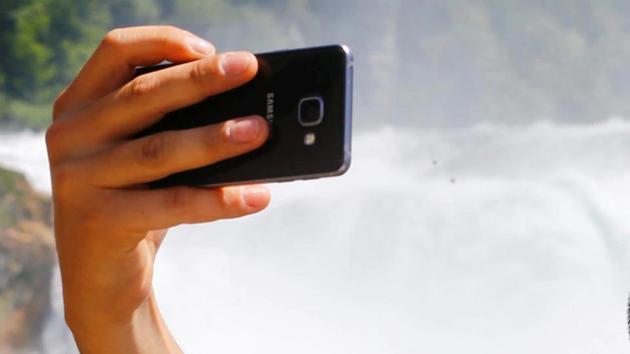Selfie the new killfie...Is it?
Two teenage friends, aged 15, were run over by a train when they were clicking a selfie on a rail over bridge near Katana Sahib village in Ludhiana district’s Doraha on Sunday. One of their friends however, had a narrow escape. The bodies of the victims --Yuvraj Singh, a Class 7 student, and Gaurav Kumar, a Class 8 student of Rampur village-- were cut into pieces.
Two teenage friends, aged 15, were run over by a train when they were clicking a selfie on a rail over bridge near Katana Sahib village in Ludhiana district’s Doraha on Sunday. One of their friends however, had a narrow escape. The bodies of the victims --Yuvraj Singh, a Class 7 student, and Gaurav Kumar, a Class 8 student of Rampur village-- were cut into pieces.

And this is not just a one-off case.
A new research claims that India has the highest number of selfie-related deaths. The study says between March 2014 and September 2016, 60% of all ‘selfie deaths’, where a person died while trying to take a picture of himself, happened in India.
Trying to decode the craze, Dr A Qureshi says: “It’s the race to prove oneself on social media and achieve maximum number of likes for the pictures are drawing the youngsters into risking their lives. They don’t differentiate between real and virtual world and go to any extent for instant fame. The only way out is to make them understand the worth of a life. So the elders, be it parents or teachers should always keep a tab on their wards and their social media frenzy.”
HT City spoke to a few UPites in and around the city to know their take on the issue.
For many it’s a matter of being identified and being able to trend. Assistant professor, Sudarshan Yadav, says: “The smartphones at present have become an extension of one’s identity. This helps the youth to connect to the world immediately on real time basis. So the urge to share real-life experiences with their friends on social media, from which they seek gratification, leads to visual recording of everything that’s happening around. Thus the selfie culture is thriving because it implies ‘I was there when this happened’.”
Dr Qureshi also feels that those amongst us who do not get praised in real life turn to social media for some attention.
Agreeing with her is Shivangi Sharma, pursuing Ph D in philosophy from Lucknow University.
“Gone are the days when the queen would ascertain her beauty by asking “Mirror mirror, on the wall who’s the prettiest of all?” The princesses and princes of today pout infront of their cameras phones claiming their space in the world. Nothing wrong! But, excess of anything is bad and I think we have had an overdose of selfie-sh pill now. Selfies have become a way of asserting one’s individuality. It’s a way of saying that I exist, when nobody else really cares. We have made our lives so worthless that just for a picture we are putting our existence on stake.”
Many psychologists put blame, especially in India, on too much exposure to the worldwide web as well as lack of proper awareness.
“You can say that today’s generation is self dependent and self aware. They do what their mind says and not the society. Also lack of awareness and too much availability of Internet is another reason,” says professor Amila Banerjee.
It’s not wrong to term the culture an addiction as it is more about being addicted to the fake world charm.
Content manager, digital marketing, Yashi Das says: “Yes no doubt we have become social media addicts and seek self-expression, opinions, likes and wows. Millions of beauty apps are available to have one perfect selfie. We want to capture everything on our phones, even washrooms and railway tracks are not spared. I had to pull myself out of this and also force my friends to quit this addiction.”
Too much of time without any work is another reason behind this craze, feels lecturer Siddharth Kapoor.
“The kids today just need to kill the time. Earlier it was books, magazines, movies, music that kept them hooked. Today it’s their phones and the urge to show the world and become one up is all what they know.”
Youngster Parul Singh tries to find a solution, “The solution is personality development and digital detox sessions at school and colleges. It all boils down to the fact that our education system has completely ignored personality development and life skills as a part of our curriculum and make them learn lesson of day-to-day life to them exactly the way our ancestors did.”






